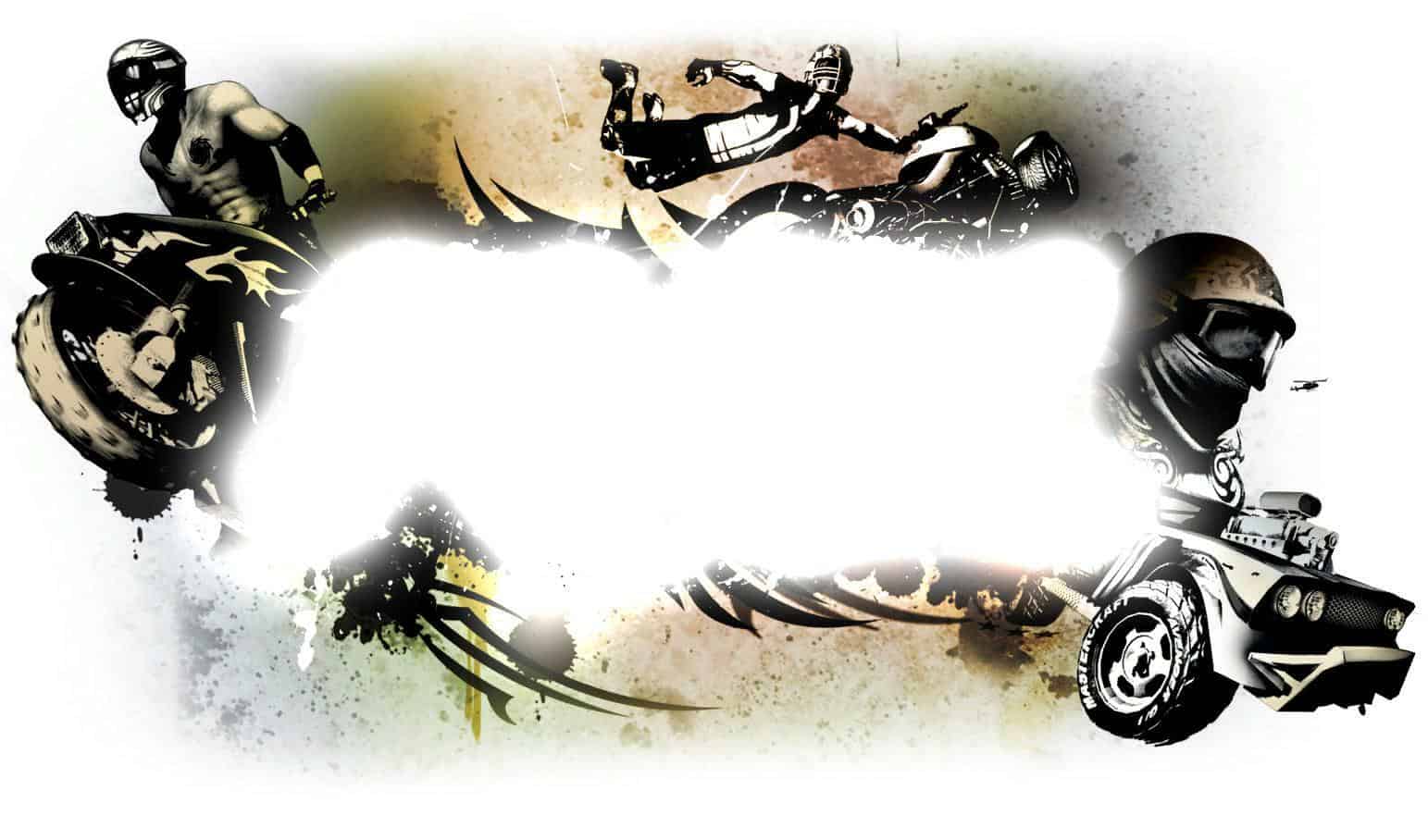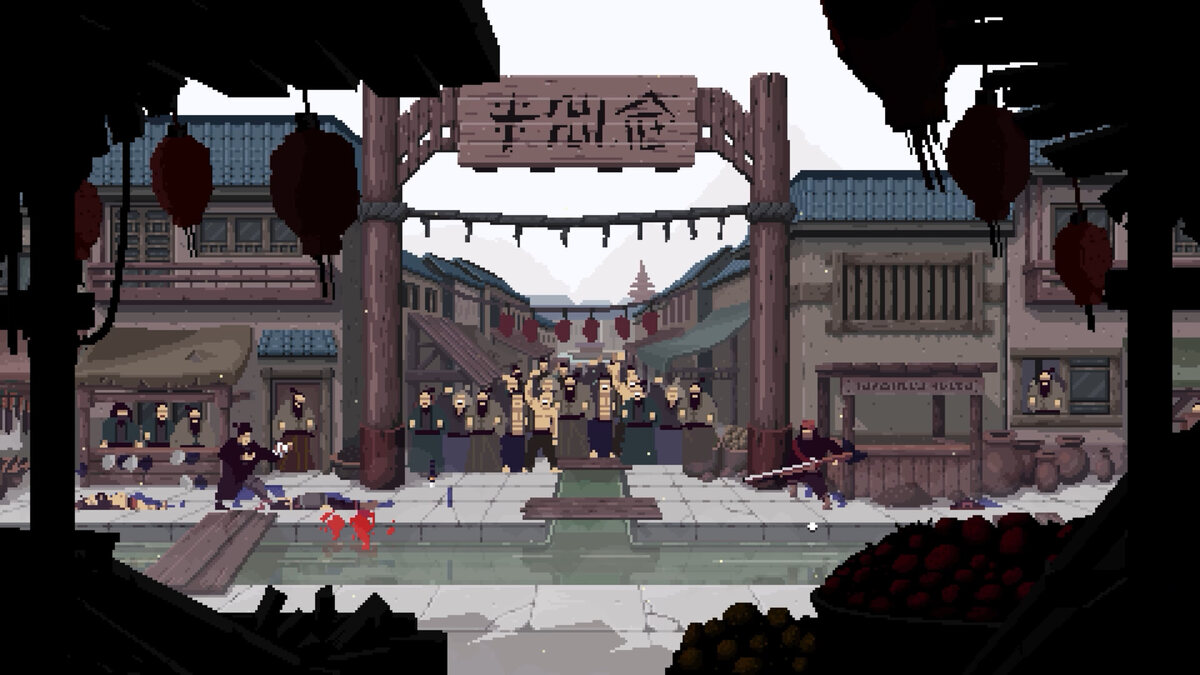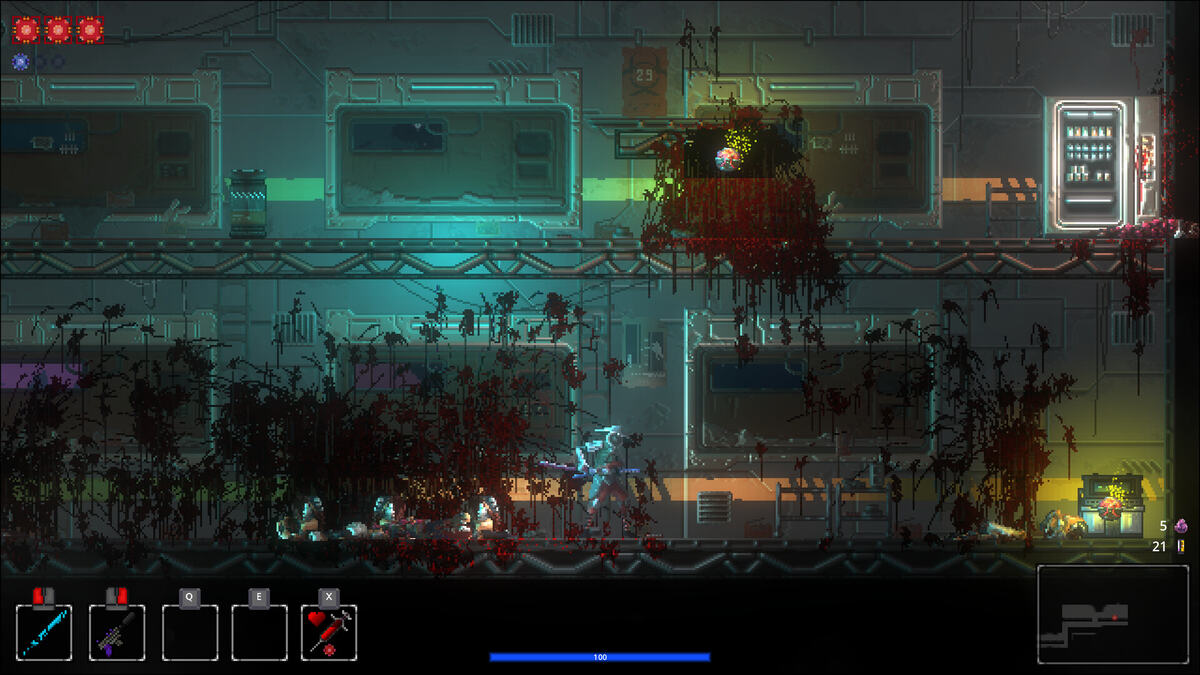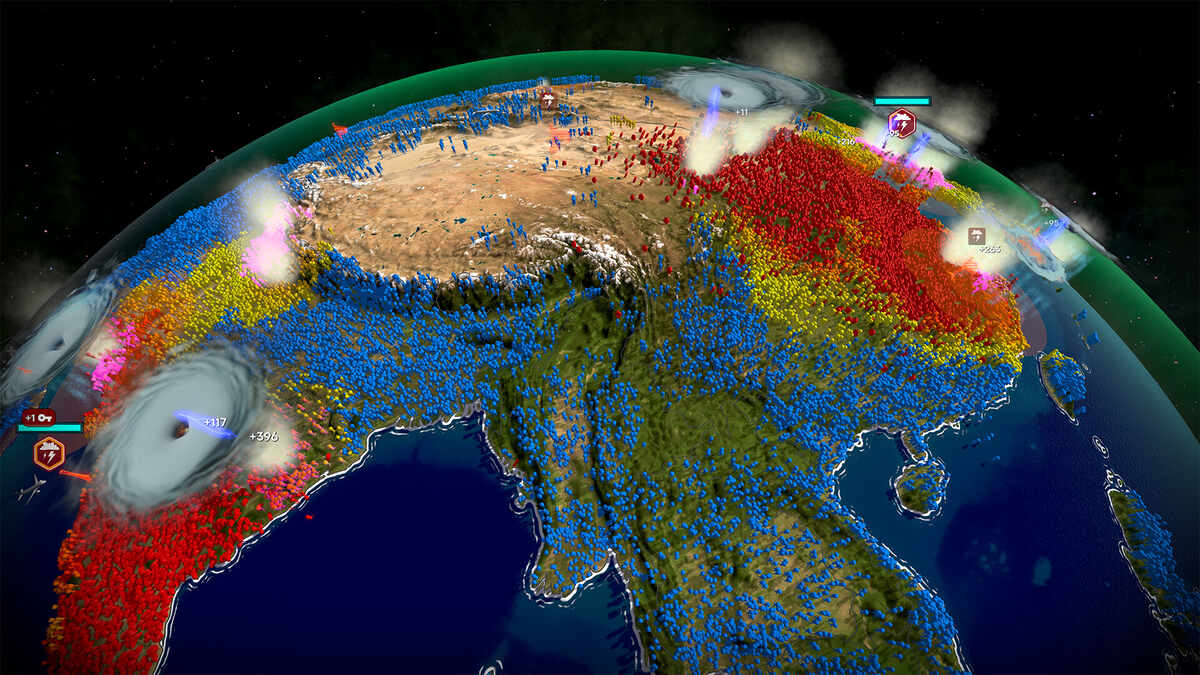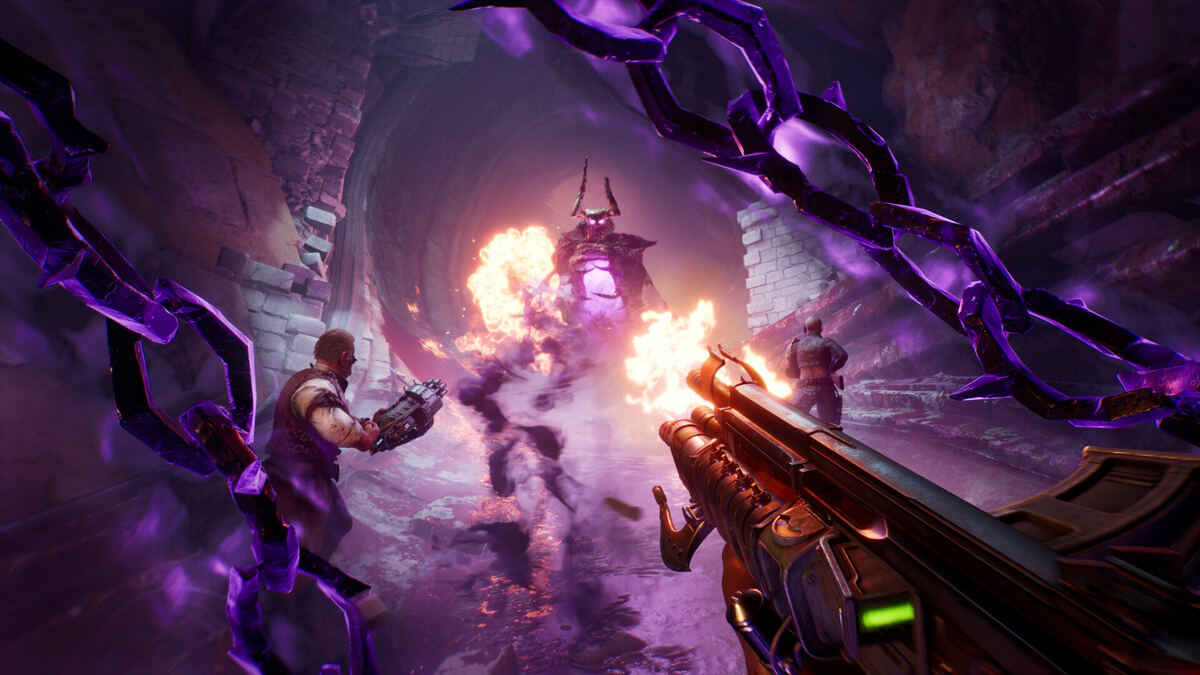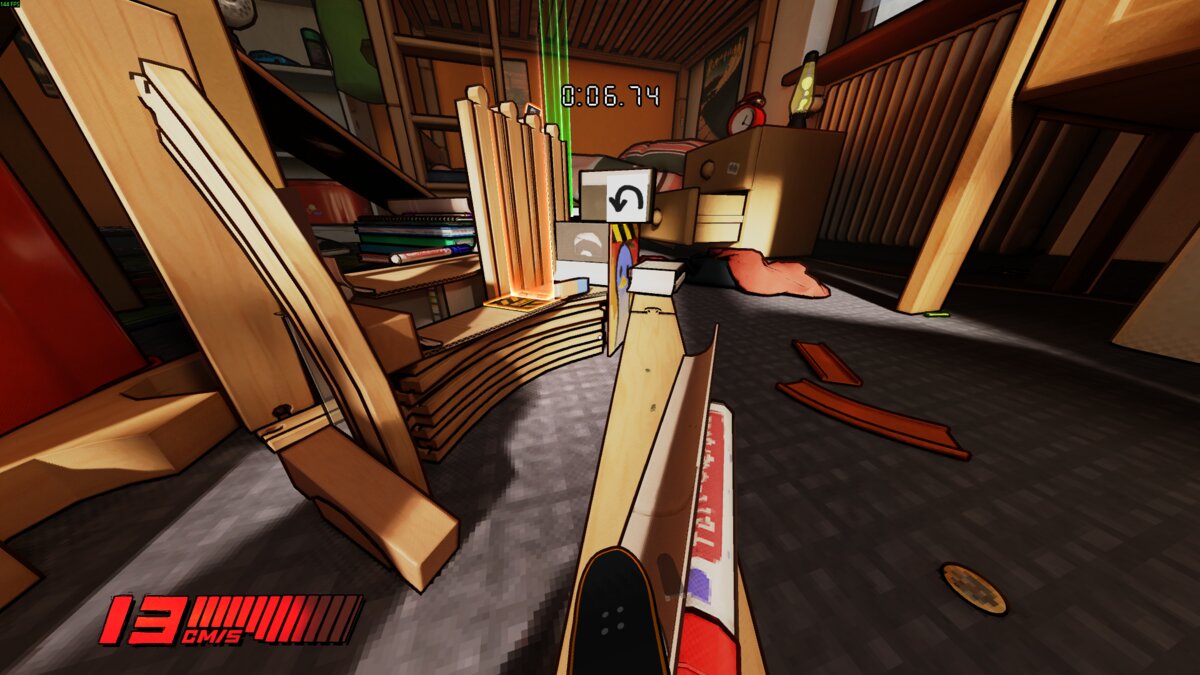You can trust VideoGamer. Our team of gaming experts spend hours testing and reviewing the latest games, to ensure you're reading the most comprehensive guide possible. Rest assured, all imagery and advice is unique and original. Check out how we test and review games here
We’re sure you know what fuel is, but we doubt you know much about FUEL, Codemasters and French developer Asobo Studio’s upcoming open-world Mad Max-style driving game. Luckily for all you petrol heads, we cornered executive producer David Brickley and Asobo co-founder Sebastian Wloch to lift the bonnet on one of the most interesting driving games of 2009.
VideoGamer.com: How would you describe the actual racing itself in FUEL compared to something like Motorstorm 2, which will probably be the most immediate comparison?
Sebastian Wloch: It really depends on the type of race because we have lots of them. For example, we have circuit races, like the one you have seen on the Yellowstone with the quads. In these races usually we have a rather tight track, for example for the quad usually there is a couple of possibilities, a couple of paths you can take, like two or three possibilities in some areas. With ramps, to jump over rivers, these races are very different from the first one you have seen, which is an ATV race where you start on a mountain and you go down to the hub, where the track is more open and you have checkpoints to go through, but only three or four. In between the checkpoints you are free to do exactly what you want and the track is not closed on the sides like the one on Yellowstone where you basically have water on one side and houses on the other side. And the Tornado race you have seen is even bigger. There you actually start from somewhere, you see the ending, it’s pretty far away, you get less checkpoints and at some points you can actually choose your route. Depending on the vehicle you have you might not take the same routes. And finally we have ATV races without any checkpoints in which you really make your own strategy depending on the vehicle you take.
If you go from A to B and there’s a tarmac road which goes maybe not straight, you’re going to take a tarmac vehicle and take this route. If you take an off-road vehicle you’re going to cut a lot more and get a more straight route. So I would say compared to the game you just listed it’s more that you can do short cuts, you can get out of the road wherever you want, you’re not constrained into a tunnel, which means if you take the exact perfect route you’re getting a real track racing experience. But at any time you can change your mind and say, “I’m going to do this…”. For example, you’re playing online, you want to take the perfect route and someone pushes you out of the road you don’t have to go back or reset. You can say, “OK, if this brings me onto an alternative route which is just as good, I continue and you don’t lose the time”. In a tunnel race you would have just hit the wall and restart. Sometimes a lot of very good racing games try to do A or B, two cars and then it comes back together. But here it’s just all the time. Wherever you go you can cut. Whenever you see a curve you can cut, you just take the risk. If you cut out of tarmac there’s going to be more bumps. You might lose control if you’re at the edge of the speed of the car, you’re taking more risks. But it’s more opportunistic gameplay because whatever happens in the race you’re more free to change your direction. When it’s totally open races, I would say it’s even more about strategy. You see all the motorbikes going this way, all the monster cars going that way. You have a motorbike and you can say, I’m not following the other motorbikes. I’m going to follow the other guys – so maybe it’s going to pay off. There’s a bit more of a strategy. If you see that some group is going nowhere and you see somebody else that’s going fast you say, OK I’m going to go after this guy.
David Brickley: There are great lessons to learn from those titles. MotorStorm is such a fantastic game to play online but they made their decisions according to the tech they had available. And there are lessons in that respect. We did find it impossible in some ways to find the right reference for what we felt we wanted. MotorStorm is a fantastic game but many people remember the FMV more than anything and what that seemed to promise. When you sat down and played it, it’s a great circuit racer but it was a mirage. When these guys developed the technology in certain ways [you thought], “this is real, man”. You look at something like MotorStorm and then get the lessons from it, but really it’s a whole other offering to say that CG movie is never a reality, or that freedom or that drama or that spectacle. Those are great lessons but we didn’t have to be constrained by having to have a turbo system. You try going ten feet off the racing line in MotorStorm and you’re back where you were.
VideoGamer.com: Were you disappointed by MotorStorm in terms of its promise?
DB: I think everybody must have thought that first video was so shocking and so spectacular. I confess when I imported it from Japan and then sat down and played it I was shocked by the limitations. Not to say it wasn’t a great game because it was, but that video, along with the Killzone one, set out to get attention. By God it did that. I think anything after that was going to be a bit of a comedown. To be perfectly honest when these guys come up with an engine that says we can render by an order of a magnitude bigger than anything that’s gone before, then it’s like, OK, we’re going to have to approach this in a completely different way.
VideoGamer.com: One slight problem I can see is, if you’re playing online the only person that gets FUEL points from a race is the person who wins. If you take a very competitive game like CoD4, even if I play as a beginner and I consistently lose then I still get experience. Is there a risk that by having a race where you only get points for winning? Is that going to be a bit harsh on beginners?
DB: I think in applying it to a genre in the way we’ve become accustomed to, then yes that would be a risk. Some of the biggest inspirations for FUEL have come from things like Cat and Mouse in Project Gotham 2. That was a huge inspiration because we thought somebody’s taken something which wasn’t meant to be and then couldn’t apply any rules to it, it was just, “You take that car, we’ll give you a minute and then we’re going to rage after you”. They made their own experience out of basic building blocks… When we talk about the career, it’s really there to give people an introduction because the world is overwhelming. You sit down for the first time and you don’t know where to go. All of these things we wanted to make digestible by the player so that once they get comfortable with it they can get to enjoy what it’s really all about, which is the Mission Editor, the variety, and finding their way through the world. Things like our currency, our FUEL, are there to basically allow a sense of progression, as something to cling onto when you get to the world, because we’re used to structure, we’re used to being handed things. That’s why they’re all there. They’re not as big a factor in the game as they would be in CoD or any other racer, where you’ve got a limited amount of content and you want to get as much out of that as you can by putting in replayability. The replayability in this game is over time, finding your own way through. Don’t follow our GPS, that’s just there to help you in the beginning. Over time it’s you discovering it for yourself. That’s how it balances out. It’s so hard to explain. It’s such a different approach because the tech is simply different to everything else.
VideoGamer.com: Is DLC something you guys have been thinking about much?
DB: Yes definitely. In terms of adding the building blocks we’d love to look at it when it’s in the wider world and the kinds of things people are doing, and put in maybe enhancements to the race editor to allow them to give structure to what people are doing in their own way. It’s impossible to do an open beta on a console at the minute, which is really frustrating for a game like this where it’s exactly what it needs. The world is there, here are the vehicles, then sit and watch what people are doing. With an MMO you can do it, but with something like this, yes we can add cars. When these guys first brought us the game they were actually saying they could make a game five times this big, because the technology takes satellite data and just does it. It was going to be an accurate representation of pretty much the whole United States. And we thought… maybe not! The more we looked into it it was like, “You know what, we’ve probably got a big enough game here”. But we could add a whole other world to be honest and it wouldn’t be an enormous download.
VideoGamer.com: It must have posed you quite a few problems working with a world this big. Does it force you to think differently in terms of the way you develop the game?
SW: We have developed lots of tools, first of all teleportation. We have had a testing team from the beginning of the game just cruising the game, reporting bugs. Our development building tool had to be rethought at the beginning because it was made to do little dungeons, you know? All of a sudden the same tool has to do 100km large worlds. Lots of different things we had to change to improve to actually make it feasible. Also we had to build new tools to allow people to change things in the world which they didn’t like. It’s a different approach when it gets this big.
VideoGamer.com: How confident are you that you’ll manage to get the game out bug free?
SW: We don’t get any more bugs than a normal racing game. It’s more gameplay bug or collision bugs or something like this, it’s not terrain too much. Because we have a 40km view distance if we have a giant hole in the ground we see it! You just have to go around the world and very quickly you will see this giant hole.
DB: Our QA is terrified. In the year we’ve had the game quality assurance, we’ve not had a single occasion of a car falling out of the world. By nature of the tech, I suppose. The biggest problem we can think of is almost gone for a start. Other things we’re kind of making decisions to avoid them being problematic. When we say there’s many helipads to get around is because we could let you teleport where you wanted, but that’s an obvious cause of problems. How do we make sure it’s free of trees? How do we make sure you don’t end up on the side of something? To avoid that completely we just have many points that we know we can guarantee are safe. And in terms in the number of races, it’s a lot, but it’s checkable. When you think about GRID and DIRT, actually the amount of permutations you can have, it gets astronomical very quickly. It’s not a new concept for the QA team.
VideoGamer.com: Given the current economic climate, everyone is having a hard time at the moment. How much is that weighing on you guys in terms of development? Does it change the way the game is being developed?
SW: No. Not at all. Asobo is now almost seven years old. We’ve done many projects that were profitable. We’re owned by the employees so we don’t have investors who are putting money into the company every month and say, “I’m going to go and put the money into petrol!” As we have had profitable games before we now have the financial security which allows us to see and look at each project on its own and try to make the best work without getting worried about price or whatever happens. We haven’t changed anything. I would even say we have been so concentrated on the game… we have heard about it but it’s not like we’ve been thinking about anything else. I know that gas went up and then back down!
VideoGamer.com: As people who make games, are you concerned to hear about the fate of other companies?
DB: I guess part of it is it’s such a ruthless industry. I remember my first job was working freelance because the guy wouldn’t hire full-time people. You’ve got no security. To be honest I feel I’ve been acclimatised to it over the years. It’s just the nature of what it is. There is no security. Perversely that’s part of the appeal. Yes it’s horrible and it’s terrifying… it’s funny that the banks are terrified now, because they’re the ones who thought they were safe. And they’re not.
VideoGamer.com: Moving on from the doom and gloom… You guys mentioned you are doing a lot of work on the PS3 version of the game. Can you elaborate?
SW: We’re spending a lot of time trying to make it visually similar on every platform. Today we’re at the stage where it is the same look. We’re now spending a lot of time optimising it for PC on all different configurations, on PS3, to take advantage of the hardware, to do everything the best way possible.
DB: The reason I wanted to make the point was that when you’ve got a cross-platform game, what we’ve found, certainly in the industry, is that people develop on PC and then the PS3 requires such effort that they just don’t bother. I mean, the port of The Orange Box should never have ended up the way it did, for a game that good. It was buggy, and the frame rate… It needs dedication. It’s a completely different structure in the chain. It’s got a single processor and then it’s got seven or six SPUs… Architecturally, it’s effort – it’s more effort to get the best out of it. But for a game like this, we really want all of them [the platforms] to have parity. But it takes effort.
VideoGamer.com: Do you think people are lazy with it?
DB: Lazy and underfunded. They just underestimate it. The thing is that the two machines, the aptitudes of the companies are so different. Sony’s attitude has always been to get a bunch of hardware guys to figure out, “Is it going to be the fastest way of getting numbers and moving things around?” They did it with the PS2, a wonderful machine but it kept trying to develop two machines at once, it’s just so much easier on PC. Start off in DirectX. The PC likes it, and the 360 likes it and it’s such effort to concentrate on the other ones you just underestimate it.
VideoGamer.com: Would you agree with that too?
SW: Maybe it would depend on the games because some PS3 games are really great. We’re putting a lot of effort on it, that’s for sure. I wouldn’t say in general it’s not the case, and some PS3 games are just as good. It needs the effort, but if you do it it’s going to be the same quality or sometimes even better.
VideoGamer.com: Back to the game, your weather system is selectable during a mission editor but in terms of the set races the big weather effects are going to be scripted, is that right?
SW: It depends on which ones you have. The big ones being the tornado, because it’s actually a 3D object in the world which moves around and destroys stuff. If you want to do this in a race and you don’t script it, like it might be doing stuff while you’re far away and if you arrive and it’s not there you just see ruins, it might ruin the experience. Whereas other effects are more, like rain, wind, fog, they apply to much larger zones, it’s easy to actually duplicate as it is to turn off and on. If you’re designing an online race and would want to use a tornado, which we don’t allow, the first player’s going to get the tornado and all the stuff and somebody who’s behind he says, “Oh I’m not getting anything”. It’s very localised. Whereas if we turn on rain or wind or whatever, we apply it to much larger zones it’s really fair because everyone gets the same conditions.
VideoGamer.com: Creating your own content is now a big trend, with games like LittleBigPlanet and the like. Does that create new problems for you guys in terms of deciding what you let people do?
SW: We’re trying to give as much stuff as possible to the players. We’ve used the same tool to build our own races so we exactly know the things we can do which are bad. So that’s basically how we filter out what you shouldn’t be able to do. But even though when we filter something it’s still so big that there’s really no limit to the amount of races you can do and where you want to start and what you want to do. It’s been used internally as a tool so we really know what works and what doesn’t work.
FUEL will be released later this year on PC, Xbox 360 and PS3. For all the latest previews and videos, head over to our game page.
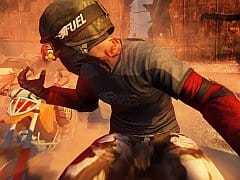
/https://oimg.videogamer.com/images/1798/fuel_13.jpg)
/https://oimg.videogamer.com/images/51a9/fuel_11.jpg)
/https://oimg.videogamer.com/images/3e46/fuel_10.jpg)
/https://oimg.videogamer.com/images/9378/fuel_6.jpg)
/https://oimg.videogamer.com/images/8ae3/fuel_9.jpg)
